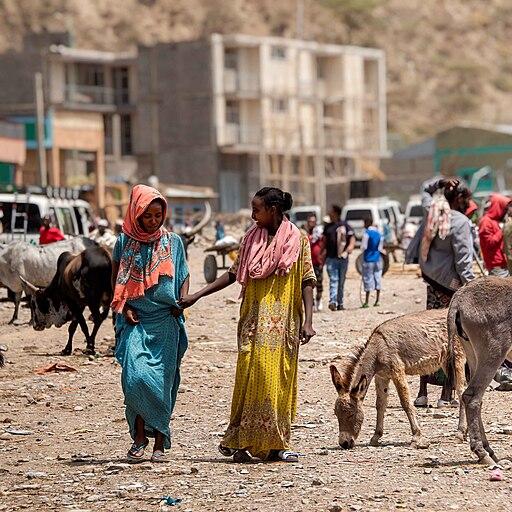Food aid, sharing and resilience: the role of collectivity and connectivity in drought affected pastoralist systems in Ethiopia
This brief aims to draw learnings from better understanding if and how pastoralists share food aid, and if and how this affects their ability to cope with and recover from drought.
The Horn of Africa is experiencing increased frequency, duration and severity of droughts, strongly influenced by climate change. Considerable attention has been given to targeting food aid, concerned that its impact may be diluted by recipients sharing food with others or diverting it to better-off households. Community social structures and coping mechanisms are perceived by government and aid agencies to be weakening to a point of failure.
To understand if and how pastoralists shared food aid, and if this affected their ability to cope with and recover from drought, we studied households in three purposively selected kebeles of Su’ula (Afar), Asli (Somali) and Fuldowa (Oromia) that had received food aid during the drought of 2020–2023.
We interviewed all 1,805 heads of households in three kebeles using a survey to ask about sharing of food (and other types of) aid (receiving and giving), its effects on coping with and recovering from drought, and about the strength of the community. Following an initial analysis of survey data, including social network mapping of giving and receiving of food aid, we interviewed households seen to play an important or clear connecting role in the network to explore the reasons for their exceptionalness.
Findings include:
- Some 86% of the households surveyed reported having received food aid from formal aid distribution sources, with 86% of households reporting that they received food aid shared from another household.
- Seventy-nine percent said that they shared food aid with another household, with a significant number both receiving and sharing. Sharing was most prevalent in Oromia (Fuldowa), with 98% of households receiving food aid from another household. Most transactions took place within the kebele.
- Relationships between givers and receivers highlighted the emphasis on family and the community.
- About 61% of households sharing food aid said they share because the recipient had none, and another 27% said, “it is normal to share.”
- While 61% of households said that the single most crucial factor that helped them cope with drought was formal food aid distribution, the sharing of food aid between households is seen as an important, often perceived as obligatory, social interaction that keeps their community strong.
Policy implications include:
- Social resilience during a drought is not solely determined by access to aid but also by the social fabric through which it flows.
- Social networks - including improving inclusivity - need to be strengthened, rather than trying to stop or limit their functionality by telling communities not to share food aid.
- Targeting of food aid (as with other aid) needs to be improved through co-design of interventions by humanitarian actors and community members to account for and support household connectivity.


